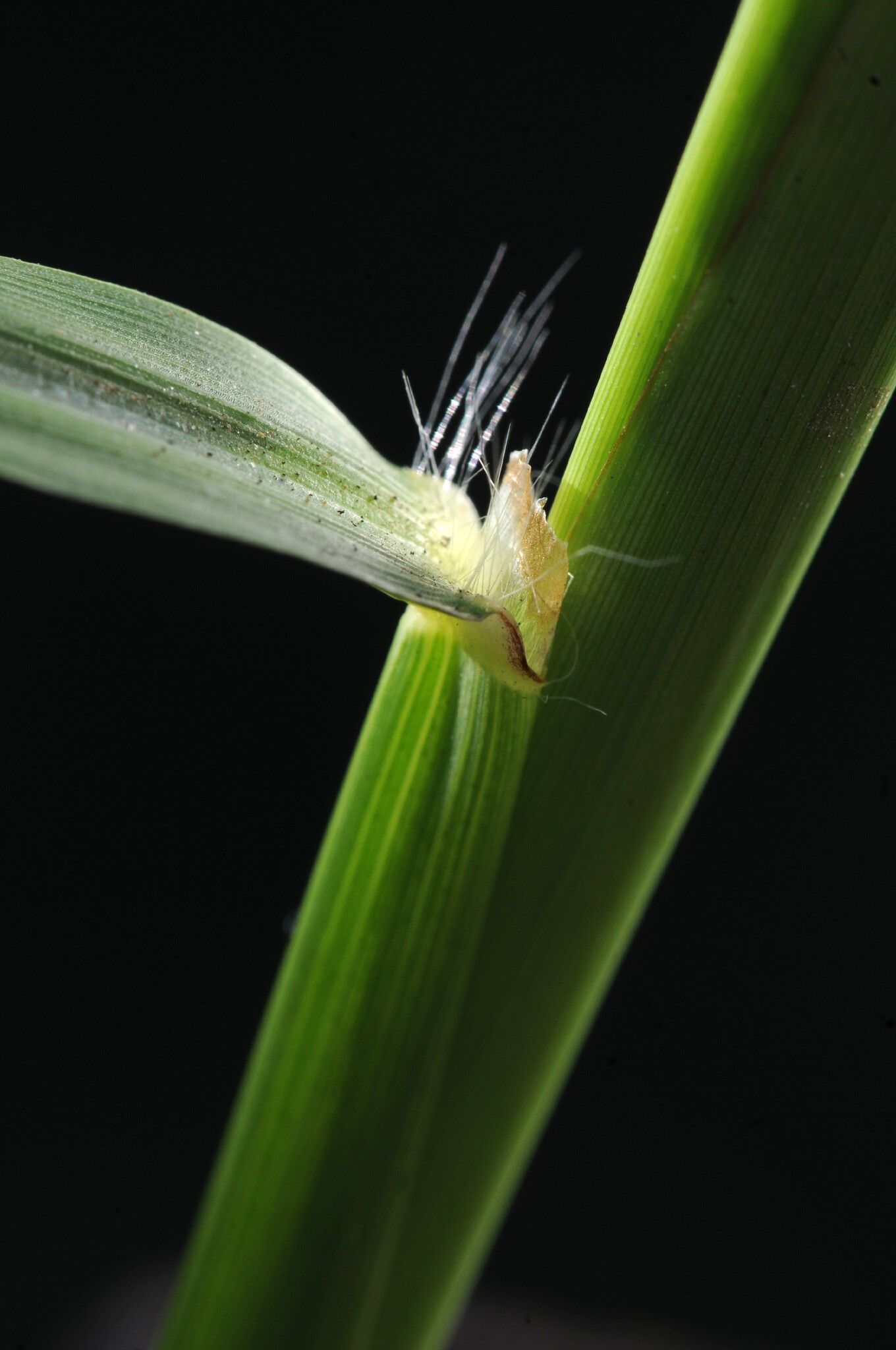
Tufted, robust, summer growing, perennial grass which when growing freely has stems to 2 m tall, but will remain more or less flat as a persistent 'crown' in lawns. Leaf rolled in bud. Leaf blade long, flat, keeled, hairless except for sparse hairs near ligule that are often tinged purple, sometimes crimped. Ligule membranous, up to 2 mm long, usually fringed with hairs. Sheath flattened, mid-vein prominent. Inflorescence 3-5 one-sided spike-like branches, spikelets arranged on the upper side, flattened, ringed with white-silky hairs.
South America
A widespread weed of lawns, sports fields, and pastures. Possibly introduced as a fodder plant and rough low maintenance turf.
P. distichum L., Water Couch, from Africa and the Americas is a summer growing, mat-forming perennial grass which spreads by both stolons and rhizomes. Found in wet areas, swamps and banks of watercourses. Used as a pasture grass, also for soil stabilisation and beach protection projects. Limited turf value.
P. notatum Fluegge, Bahia Grass from South America is a coarse-textured warm season deep-rooted perennial grass with short, strong rhizomes; it is used for rough pasture, erosion control in salt-affected areas as well as rough fairway turf.
P. vaginatum Swartz, Seashore Paspalum from South America is a warm season prostrate growing perennial that spreads by stolons and rhizomes; it has been used in lawns and bowling greens in South Australia.
Source: (2005). Poaceae. In: . Horticultural Flora of South-eastern Australia. Volume 5. Flowering plants. Monocotyledons. The identification of garden and cultivated plants. University of New South Wales Press.
